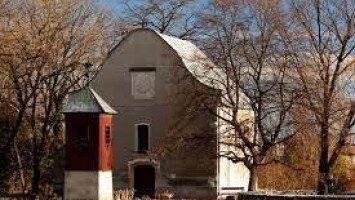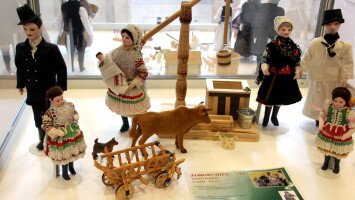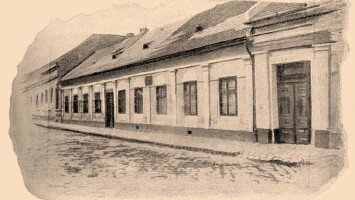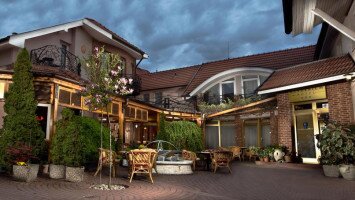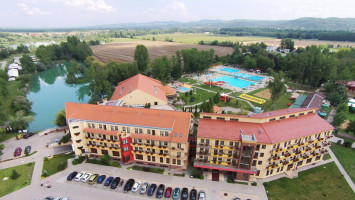
History of Svodín
The first written mention of the village comes from 1156, where it appeared under the name Scheuden.
The results of archaeological research carried out in 1971 proved that the territory of the village has been inhabited since the beginning of the Stone Age. The first excavations took place on Busahegya, which became the most important site - they found stone tools that were several thousands of years old. They also discovered traces (according to the discovered monuments from the late Neolithic people of the Lengyel culture) of the settlement from the 4th millennium BC. From the period 5th-4th millennium BC are remarkable anthropomorphic artifacts, namely two vase-shaped vessels, which are interesting for their ceramic shape and the idea of the identification of women.
Findings from the year 2000 BC people with fluted pottery are located in the Archaeological Museum in Budapest. Bracelets and a sword were discovered from the Bronze Age. A site from Roman times appeared in the area of the Farkaspuszta district. In Busahegya they discovered the Avar warmaker camp, where they lived with the Slavs. On the Várhely hill, which no longer exists today, a famous Slavic fort was discovered.
In the 4th century BC, the Celts came here, the first known group of people living here. In the 1st year AD, the territory became a province of the Roman Empire. In the 5th century, Huns appeared here, which are being considered to be the ancestors of today's Hungarians. After them, the Avars and later, in the 8th century, the Moravian Slavs settled here, who began to engage in agriculture. In the 9th-10th century, the Slavs left the given locality and came here, although nomadic Hungarians settled on both banks of the Danube. This area was incorporated into the Arpad family. A tribe of Chief Tord settled in the part of the settlement of Busahegy. Later, Stephen I. accepted this settlement as a royal estate as a settlement on the slopes of the "Sparkling Wine" grape-Szölgyön. During the reign of Gejz II. both settlements, Buzahegy and Várhely, belonged to the Esztergom estate. In 1242 it was occupied by the Tatars, after which King Bela IV. summoned German and Slovak settlers to the village. About 40 German families came, and the village was actually divided into two parts, namely the "Hungarian" called Unngarica Villa Sceudin and the "German", which they named after the Germanic tribe Teuton, which means, Theutonica Villa Sceudin.
Since 1291, the existing territory of the village has been divided into Hungarian and German Svodín and continues to this day. During the Kuruk wars (in 1708), both Svodina were occupied by František Rákoczi with the help of the landowner Ján Bottyán of Nová Vieska, and in 1710 the settlement of Várhely was razed to the ground.
After the restoration of the Czechoslovak Republic after World War II, they were part of it and from June 28, 1948, they were merged under the name still used today, Svodín.
Source: http://www.svodin.sk/

